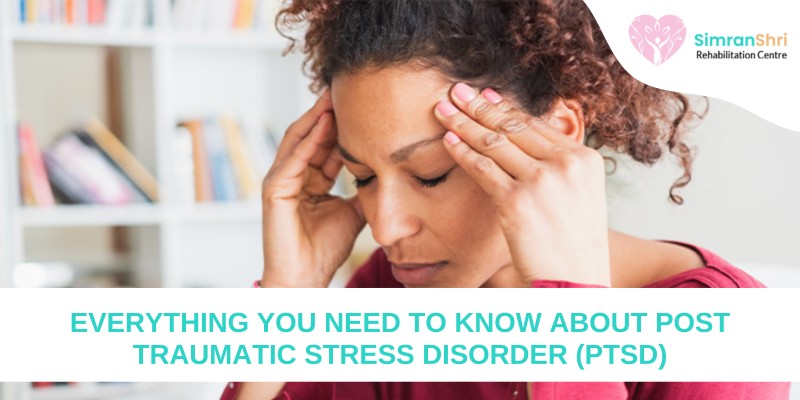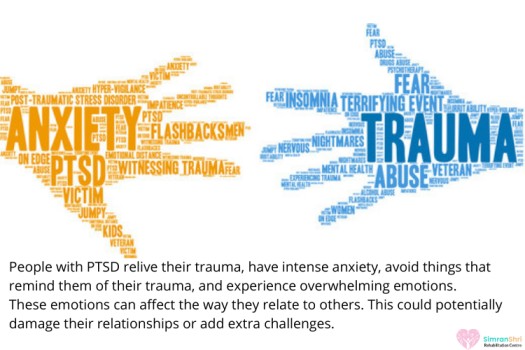

As the name suggests, Post-traumatic stress disorder is a disorder that develops when individuals are directly or indirectly involved in a scary, shocking or dangerous event. Although it is human to feel frightened by a traumatic incident, some people do not recover from the trauma and continue to experience problems. These people have Post-traumatic stress disorder and feel terrified or stressed even in the absence of danger. They relive the incident through nightmares or flashbacks; they feel sadness, anger or helplessness; they also feel estranged or detached from others.
Get acquainted with post-traumatic stress disorder, its signs and symptoms to help yourself or your loved ones struggling with it.

Individuals exhibit symptoms of PTSD within three months of experiencing the event. At times it is also reported years later. The duration and severity of the illness vary among individuals; some recover within six months while others much longer. Symptoms of post-traumatic stress disorder fall under the following four categories:
This is the initial stage of post-traumatic stress disorder, wherein the individual struggles to deal with the event.
Individuals might or might not experience this stage of PTSD. This stage is when individuals try to numb themselves by denying the event's occurrence. Through denial, the individual protects themselves from further anxiety and stress. This coping mechanism helps them move forward in life, although a mental health professional needs to address these issues.
This stage is often the most destructive stage of PTSD. It is marked when the individual acknowledges what they've gone through while dealing with the initial distress and shock. Some psychological symptoms experienced at this stage include despair, confusion, denial, and hopelessness.
Individual Embark on their journey to recovery at this stage; they start adjusting to their routine. Individuals feel humbled by the love and support offered to them or disappointed by others because of their lack. This stage entails the transformation to understanding and accepting the trauma and its effect on the self. Healing begins with a positive outlook with steps to overcome PTSD.
Also called the integration stage, witnesses the individuals working through the recovery program. Healthy coping mechanisms are learned to address the symptoms and practised in day to day life. Individuals need to stick to these coping mechanisms to avoid regression and continued recovery.
Individuals with PTSD often experience anxiety symptoms, resulting in individuals adopting unhealthy coping mechanisms of drug abuse etc. This temporary relief is not worth the long term repercussions; here are a few healthy coping mechanisms that will help deal with symptoms of post-traumatic stress disorder and reduce anxiety.
It might sound silly, but people have forgotten how to breathe properly over time! Breathing involves the expansion of the diaphragm and abdomen followed by its contraction. People indulge in short and shallow breathing, which involves their shoulders and chest. This increases stress and anxiety. Re-learn breathing, take deep breaths and combat stress and anxiety.
This technique relieves stress and anxiety; it focuses on alternating between tensing and relaxing different muscles of the body. One can experience complete relaxation after they release the tensed group of muscles. Practice progressive muscle relaxation to give your body signals of relaxation, which effectively reduces anxiety.
Mindfulness is known to benefit those suffering from anxiety and depression. It makes one aware of themselves and feel the current moment. Those suffering from anxiety, suffering multiple thoughts running in the head, find relief when they encounter the present moment.
The act of engrossing oneself in productive and rewarding activities keeps one motivated. Take up a doable task, break it into small steps and work towards it; on completing the job, you will feel happy. These small activities keep one engaged and help in reducing anxiety and stress.
These are a few handy Post Traumatic Stress Disorder Natural Treatment that one can adopt to manage PTSD. However, a professional’s help is necessary for recovering from the trauma.
Suffering from PTSD might feel like there is no end to it. But PTSD is treatable. A combination of psychotherapy and medication works wonders for the sufferer. The aim of therapy is to-.
Most therapies that help with PTSD fall under cognitive behavioural therapy. The main idea behind these therapies is to distort the disturbing thought patterns controlling you. If required, one can also be a part of group and family therapy.
The therapies commonly used for PTSD include,
Medication will help gain a positive outlook on life and deal with the nightmares and flashbacks that one goes through. Medicines that affect the neurotransmitters serotonin and norepinephrine are prescribed initially. These include,
Medications alone won't help you get rid of symptoms. You will need to combine it with the Best Stress Management Counselling and PTSD therapies for effective treatment.